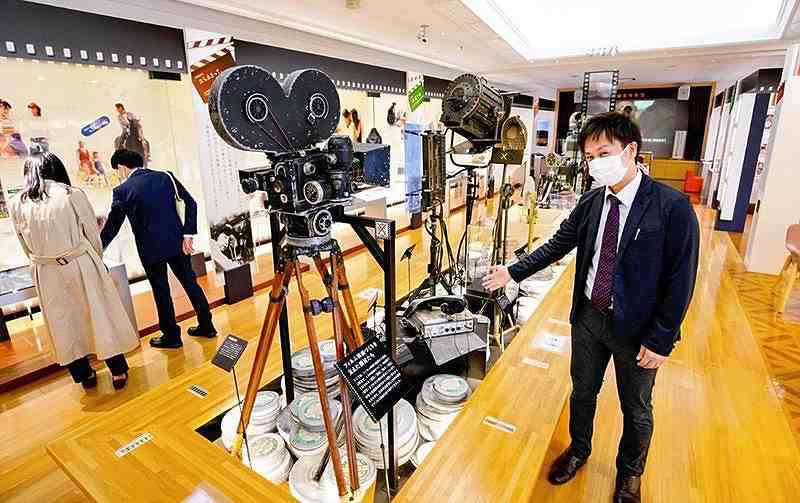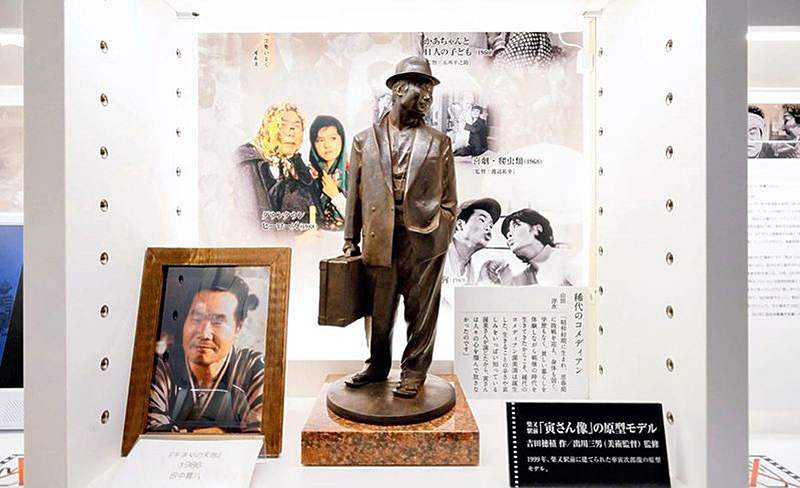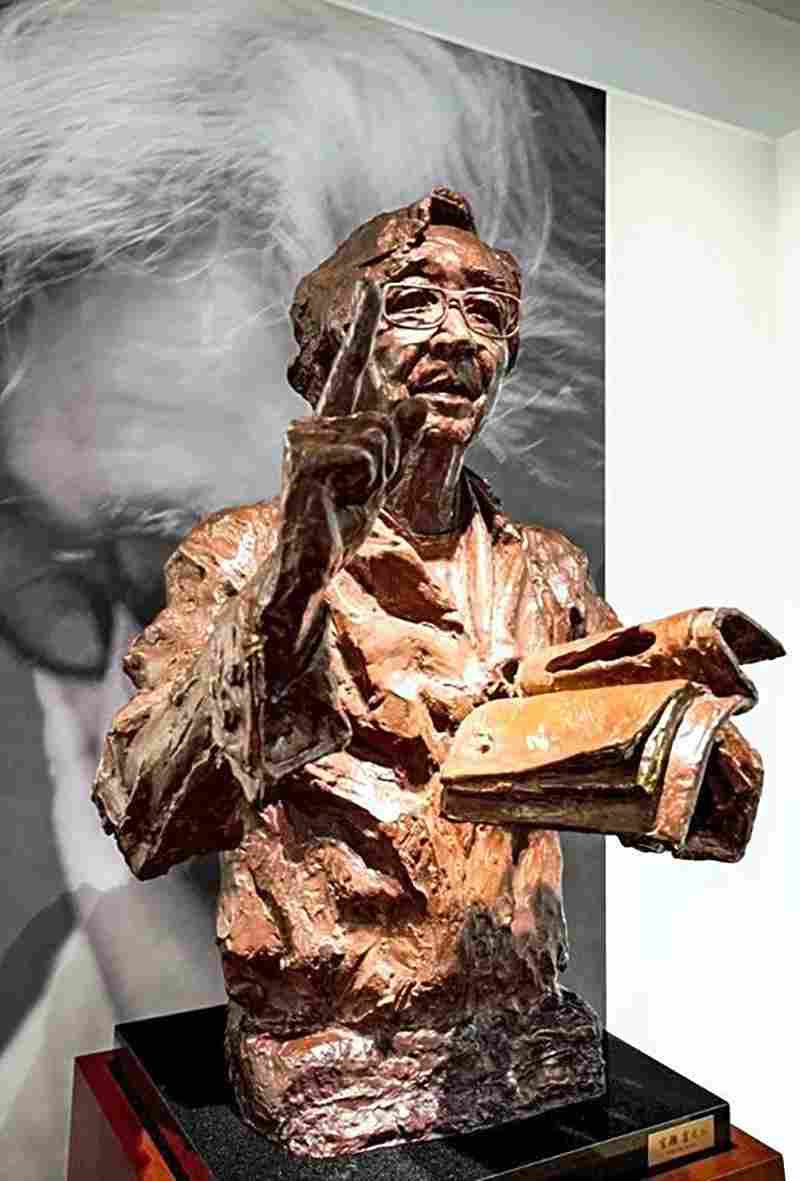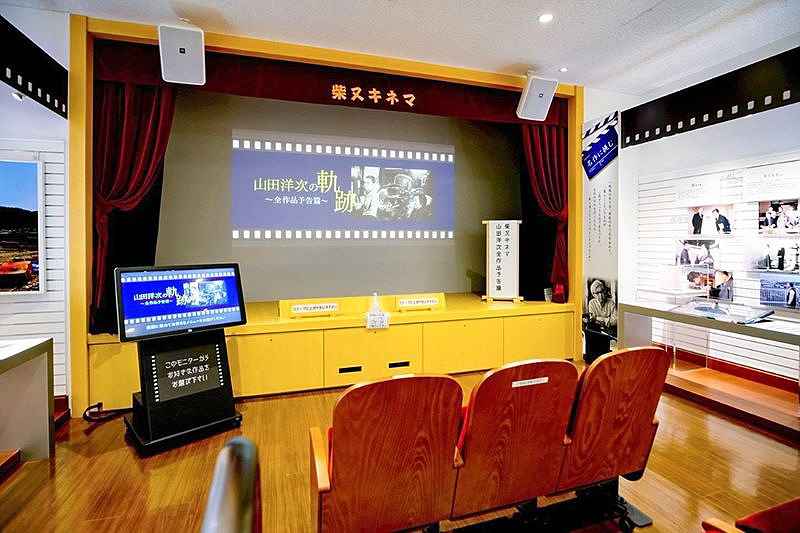
Equipment that director Yoji Yamada used for filming and editing is displayed at the Yamada Yoji Museum in Katsushika Ward, Tokyo.
15:25 JST, December 14, 2021
The Shibamata Taishakuten temple and its nearby shopping street close to Shibamata Station on the Keisei Line are the backdrop for the movie series, “Otoko wa tsuraiyo” (It’s tough being a man). The area is also home to the Yamada Yoji Museum, which honors Yoji Yamada, a 90-year-old master director of Japanese films that include the “Otoko wa tsuraiyo” series.
A collection of film equipment and other items that Yamada used are on display in the middle of the museum. Today, digital technology is the mainstream in film production, but Yamada continued to shoot using film until the 2010s.

The original model of a statue of Tora-san, the main character of the “Otoko wa tsuraiyo” (It’s tough being a man) movie series
“The equipment is becoming rare,” said Shuichiro Yokoyama, the museum’s general manager.
The museum also displays a timeline for the filmography of the prolific director, who joined Shochiku Co. in 1954 and made his directorial debut in 1961. He launched the “Otoko wa tsuraiyo” series in 1969.
His signature films also include “Where Spring Comes Late” in 1970, “The Yellow Handkerchief” in 1977, “A Class to Remember” in 1993 and “The Twilight Samurai” in 2002.

A statue of Yoji Yamada
When Yamada joined the film company, there was a trend dubbed the Shochiku “Nouvelle Vague” (New Wave) and best represented in films such as “Cruel Story of Youth” in 1960, directed by Nagisa Oshima, one of the major film directors of the same generation. However, Yamada was not part of this trend; his focus has been on meticulously depicting everyday people in each period of time.
There would appear to be a connection between the director’s trend of depicting everyday people to his childhood memories. Yamada watched “Roadside Stone” directed by Tomotaka Tasaka together with his family’s housemaid in his early elementary school days when he lived in Manchuria, currently northeast China, due to his father’s job. Perhaps because she saw the fate of the main character and her own situation overlap, the maid started crying out loud. It left a strong impression on Yamada.

In a section that resembles a movie theater, visitors can view trailers for all of Yamada’s films.
“This experience may be the origin of his consistent style,” said a Shochiku employee in charge.
Exhibits in the museum are organized into various themes that range from his debut production to education and the Great East Japan Earthquake. Quotes from Yamada are also on display. Among them, Yamada said about his works, “I can say the protagonists are always people who are on the margins of society.”

Yamada has drawn his attention to those who are on the margins of society and their daily lives, and viewers can feel the warmth through his films.
Yamada Yoji Museum: 6-22-19, Shibamata, Katsushika Ward, Tokyo
"Culture" POPULAR ARTICLE
-

Van Cleef & Arpels Dazzles with Art Deco Artisanry at Tokyo Exhibit
-

Disney’s ‘Twisted-Wonderland’ Animated Series Puts Villains in Spotlight: New Show Features School Inspired by Classic Disney Films
-

Ayumi Hamasaki’s Shanghai Concert Canceled Day Before Schedule as Part of Beijing Backlash
-

‘The World Masterpiece Theater Series’ Celebrates 50 Years; Animator Looks Back on Creating Anime Classics
-

Popularity of Piggy Banks Across Time and Place Seen at Bank’s Museum of Money Boxes in Hyogo Pref.
JN ACCESS RANKING
-

Tokyo Economic Security Forum to Hold Inaugural Meeting Amid Tense Global Environment
-

Keidanren Chairman Yoshinobu Tsutsui Visits Kashiwazaki-Kariwa Nuclear Power Plant; Inspects New Emergency Safety System
-

Imports of Rare Earths from China Facing Delays, May Be Caused by Deterioration of Japan-China Relations
-

University of Tokyo Professor Discusses Japanese Economic Security in Interview Ahead of Forum
-

Japan Pulls out of Vietnam Nuclear Project, Complicating Hanoi’s Power Plans























